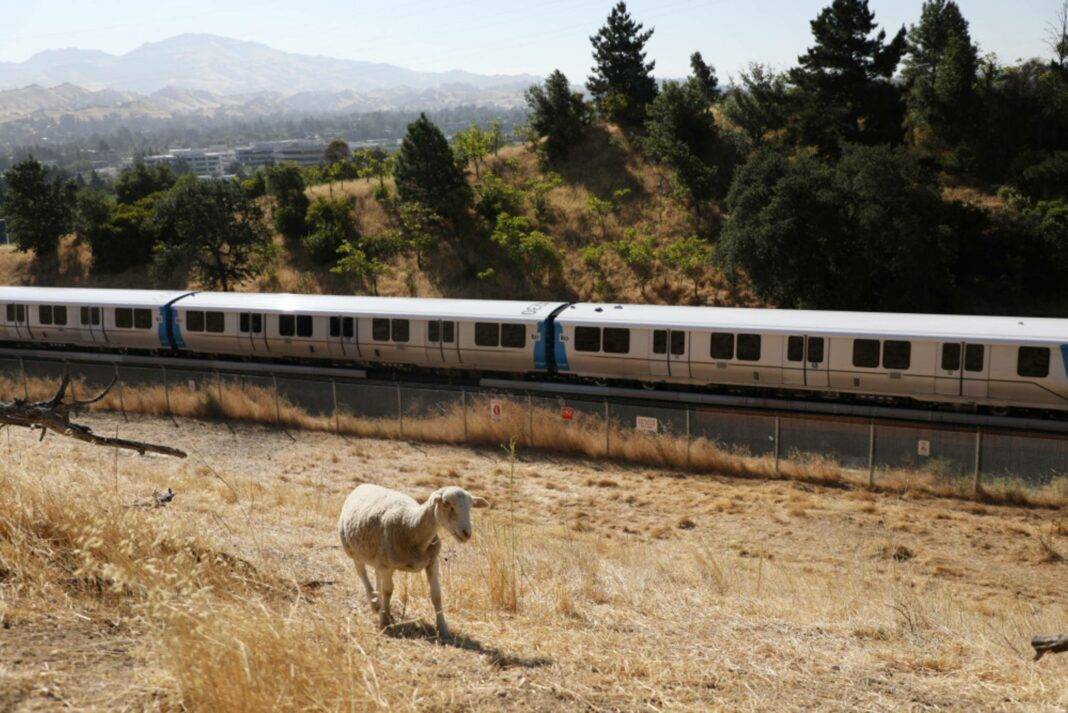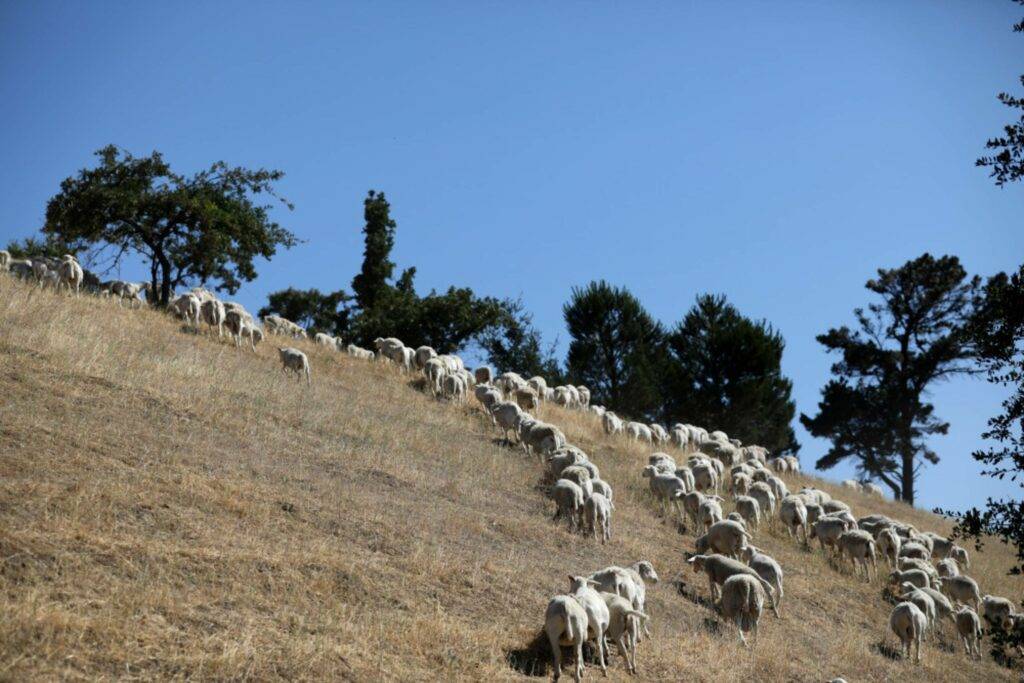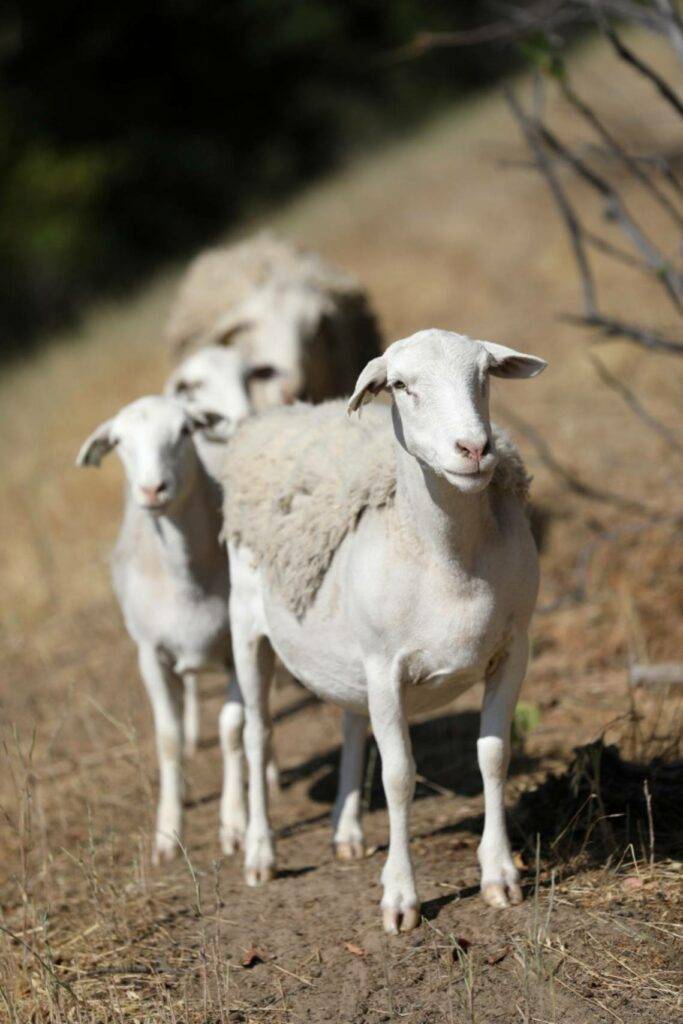These new firefighters wear wooly jackets year-round.
With wildfires increasing in intensity due to climate change — the recent Maui wildfire is the deadliest in U.S. history — experts are turning to innovative solutions to reduce risk. Including employing sheep.
BART (Bay Area Rapid Transit), the transit agency whose trains connect San Francisco with nearby counties and its main airport, now relies on 500 sheep to munch grass on its properties abutting railroad tracks. Seasonal workers, the sheep began their work late this past spring and will return to their farm in Fresno in November, roughly when the rainy season starts. The sheep replaced 100 goats that munched for BART for the past two years. Rotating the animals every few years makes sense, because sheep and goats have different eating habits.
The fuzzy firefighters are highly skilled. “The steep hillside near Walnut Creek … looked like humans had manicured the lawn,” says James Allis, media manager at BART, who notes that the sheep clear about an acre per day. “Sheep like shorter, finer grasses, are more detail-oriented, and eat what’s left after the goats do their part,” Allis explains. Goats, on the other hand, “will eat bigger, more brittle dry grass, even poison oak, and can scale trees a bit.”
Sheep also emit fewer pollutants than gasoline-powered machinery and can reach steep areas that are hard for humans with mowers to access. In short, they’re ideal employees. “They’re amazingly focused. When they find a spot where they like to eat, they stay there. They don’t expend much energy looking for other spots,” Allis says. “The herd stays together, finding comfort in numbers. After they work in one section, they move to another.”
This year, the sheep began grazing in semi-urban areas near the North San Jose station, moved to Fremont in Alameda County, and now graze between Walnut Creek and Pittsburg/Bay Point in Contra Costa County. The goats were popular enough that BART even created an anime character, inspired by the example of Asian transit agencies. Used in social media and as giveaways to attract Gen Z riders, BART’s goat anime is so popular that at an anime convention in San Jose in May, a line of people out the door waited to take selfies with a cardboard cutout of the BART goat.
The wooly weedwackers are Dorpers, a hardy breed of sheep with short coats and thick skin who are self-shearing — they shed in summer without requiring human help. Bred by South Africa’s Department of Agriculture for arid regions, they can withstand high heat.
Living Systems Land Management, based in the Central Valley, supplies the animals for fire mitigation, habitat restoration, and weed control. “Dorper sheep are more goat-like — they’re non-selective eaters,” explains owner Mike Canaday, who keeps 4,000 Dorper sheep as well as 4,000 Spanish-Boer goats. “They’ll eat stuff woolier sheep won’t touch, like foxtails. They’re a wonderful breed; I won’t have anything else.”
Using sheep and goats for land management — instead of mowing, disking, and burning — isn’t new, Canaday says, but an ancient tradition. Managed grazing takes into consideration factors like vegetation and soil types, watershed functions, plant recovery mechanisms, nutrient flow and energy cycling. According to the Living Systems Land Management site, “California Indians practiced resource management at four levels of biological organization: the organism, the population, the plant community, and the landscape. They used resource management techniques at each of these levels, or scales, to promote the persistence of individual plants, plant populations, animal populations, plant associations, and habitat relationships in many different vegetation types in California.” (The quote is from Tending the Wild, a book by M. Kat Anderson, associate ecologist at the University of California, Davis Agricultural Experimental Station, and a research associate in its plant sciences department.)
Watching the sheep placidly doing their job for fire safety, emitting an occasional baa, one can only wonder at their ovine thoughts. Perhaps they’re simply enjoying lunch. Perhaps they’re feeling good about the role they play in preventing wildfires. Or perhaps they’re hoping that they, too, will eventually be honored with an anime of their very own.




